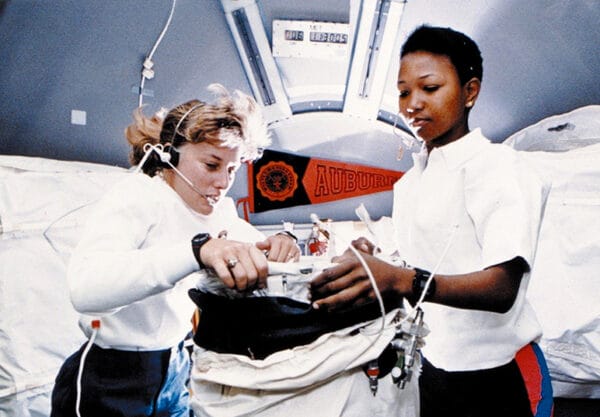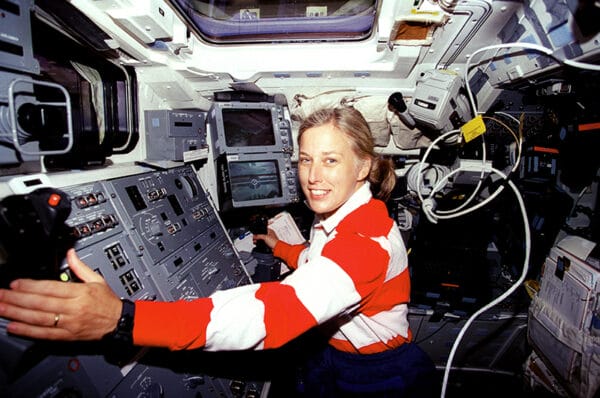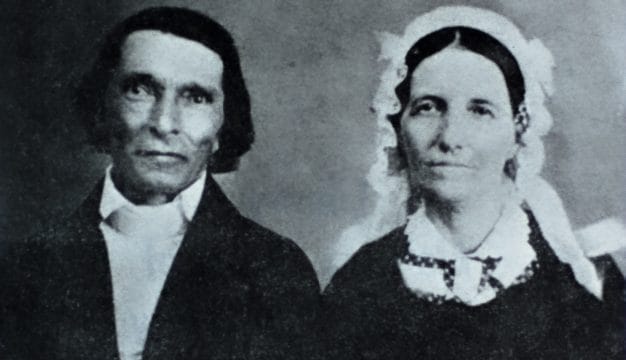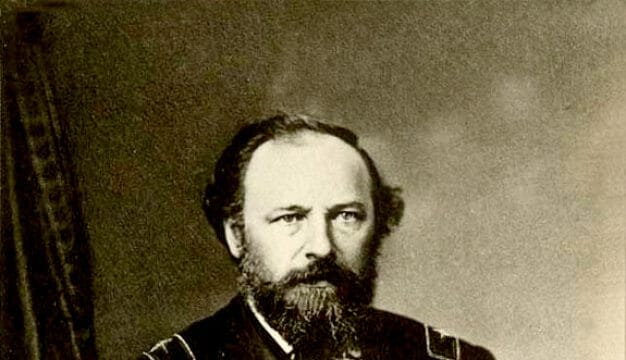Jan Davis
 Nancy Jan Davis
Nancy Jan Davis (1953- ) is a former American astronaut who logged more than 673 hours and 11 million miles in space and orbited the earth 445 times on three Space Shuttle flights in the 1990s. She also held many leadership positions with the National Aeronautics and Space Administration (NASA) before retiring from the agency in 2005. She continues to work with a NASA contractor at the Marshall Space Flight Center in Huntsville, Madison County.
Nancy Jan Davis
Nancy Jan Davis (1953- ) is a former American astronaut who logged more than 673 hours and 11 million miles in space and orbited the earth 445 times on three Space Shuttle flights in the 1990s. She also held many leadership positions with the National Aeronautics and Space Administration (NASA) before retiring from the agency in 2005. She continues to work with a NASA contractor at the Marshall Space Flight Center in Huntsville, Madison County.
Davis was born Nancy Jan Smotherman on November 1, 1953, in Cocoa Beach, Florida. Her family moved to Huntsville, Madison County, which she considers home, when she was in elementary school. Later, she took her stepfather’s last name. After graduating from Huntsville High School in 1971, Davis earned a bachelor of science degree in applied biology in 1975 from the Georgia Institute of Technology in Atlanta. Two years later, she earned a second bachelor’s degree in mechanical engineering from Auburn University in Auburn, Lee County. Davis then went to work for Texaco in Bellaire, Texas, as a petroleum engineer in tertiary, or enhanced, oil recovery methods and contributed to the use of steam flooding, a procedure used to increase the oil’s mobility, making it easier to extract from underground deposits for several years.
 Jan Davis and Mae Jemison
Joining NASA in 1979 as an aerospace engineer at the Marshall Space Flight Center, Davis completed her postgraduate work at the University of Alabama in Huntsville with a master’s degree in mechanical engineering in 1983 and a Ph.D. in mechanical engineering in 1985. In 1986, she became the team leader of Marshall’s Structural Analysis Division, which managed the structural analysis and assembly of the Hubble Space Telescope, launched into low Earth orbit in 1990, and the first Hubble maintenance mission launched on December 2, 1993. Her team also managed the preparation of the Advanced X-Ray Astrophysics Facility (renamed the Chandra X-Ray Observatory in 1998), a space observatory launched on July 23, 1999, to detect X-rays from astronomical objects in space. In 1987, Davis became the lead engineer for the redesign of the O-rings that sealed the two solid rocket boosters to the external tank of the remaining Space Shuttles, following the Space Shuttle Challenger (OV-099) explosion on January 28, 1986.
Jan Davis and Mae Jemison
Joining NASA in 1979 as an aerospace engineer at the Marshall Space Flight Center, Davis completed her postgraduate work at the University of Alabama in Huntsville with a master’s degree in mechanical engineering in 1983 and a Ph.D. in mechanical engineering in 1985. In 1986, she became the team leader of Marshall’s Structural Analysis Division, which managed the structural analysis and assembly of the Hubble Space Telescope, launched into low Earth orbit in 1990, and the first Hubble maintenance mission launched on December 2, 1993. Her team also managed the preparation of the Advanced X-Ray Astrophysics Facility (renamed the Chandra X-Ray Observatory in 1998), a space observatory launched on July 23, 1999, to detect X-rays from astronomical objects in space. In 1987, Davis became the lead engineer for the redesign of the O-rings that sealed the two solid rocket boosters to the external tank of the remaining Space Shuttles, following the Space Shuttle Challenger (OV-099) explosion on January 28, 1986.
Davis qualified as an astronaut in June 1987 and served in the Astronaut Office Mission Development Branch at the Johnson Space Center in Houston, Texas, providing technical support for Space Shuttle payloads and then serving as a capsule communicator in Mission Control for seven Shuttle missions. Her first flight into space was during Space Transportation System mission 47, the fiftieth Space Shuttle mission, aboard the Shuttle Endeavour (OV-105), launched on September 12, 1992. The eight-day mission, with Alabamian Mae Jemison, was a cooperative venture between the United States and Japan. Davis directed the operation of Spacelab, a reusable component-based laboratory housed in the shuttle’s cargo bay, and oversaw the performance of 43 life science and materials processing experiments conducted in it. The payload commander was Mark C. Lee, whom Davis had secretly married prior to the mission. The Endeavour landed at Kennedy Space Center, Florida, on September 20, 1992, after completing 126 orbits. Davis then became the Astronaut Office representative for the remote manipulator system, the electromechanical arm of the shuttle’s payload deployment and retrieval system, and oversaw the manipulator’s operations, training, and payloads.
Davis flew her second mission aboard the Space Shuttle Discovery (OV-103), launched on February 3, 1994. The eight-day mission was the second flight of the Space Habitation Module, or “Spacehab”; the first flight of the Wake Shield Facility, an experimental science platform to conduct thin-film crystal growth; and the first Space Shuttle flight with a Russian cosmonaut as a crew member. During the mission, Davis maneuvered the facility with the remote manipulator to conduct thin-film crystal growth and performed other scientific experiments in the Spacehab. The Discovery landed at Kennedy Space Center on February 11, 1994, after completing 130 orbits. Following that mission, Davis chaired the NASA Education Working Group and as chief of the Payloads Branch, which provided Astronaut Office support for Shuttle and International Space Station payloads.
 Jan Davis Aboard Discovery
Davis was the payload commander on her third and last space flight, aboard the Discovery, launched on August 7, 1997. During this 12-day mission, Davis deployed and retrieved the Cryogenic Infrared Spectrometers and Telescopes for the Atmosphere-Shuttle Palette Satellite, a limb-scanning satellite experiment consisting of three telescopes and four spectrometers, designed to measure infrared emissions of the Earth’s atmosphere. She also operated the Japanese-made Manipulator Flight Demonstration robotic arm. The mission included several other scientific payloads related to research on astronomy, earth sciences, life sciences, and materials science. After completing 189 orbits and traveling 4.7 million miles, the Discovery landed at Kennedy Space Center on August 19, 1997. Overall, Davis logged more than 673 hours and 11 million miles in space and orbited the earth 445 times.
Jan Davis Aboard Discovery
Davis was the payload commander on her third and last space flight, aboard the Discovery, launched on August 7, 1997. During this 12-day mission, Davis deployed and retrieved the Cryogenic Infrared Spectrometers and Telescopes for the Atmosphere-Shuttle Palette Satellite, a limb-scanning satellite experiment consisting of three telescopes and four spectrometers, designed to measure infrared emissions of the Earth’s atmosphere. She also operated the Japanese-made Manipulator Flight Demonstration robotic arm. The mission included several other scientific payloads related to research on astronomy, earth sciences, life sciences, and materials science. After completing 189 orbits and traveling 4.7 million miles, the Discovery landed at Kennedy Space Center on August 19, 1997. Overall, Davis logged more than 673 hours and 11 million miles in space and orbited the earth 445 times.
After her final space flight, Davis became the director of the Human Exploration and Development of Space (HEDS), Independent Assurance Office for the Office of Safety and Mission Assurance at NASA headquarters in Washington, D.C. In that position, Davis oversaw independent assessments for HEDS programs and projects. In July 1999, she returned to the Marshall Space Flight Center as director of the Flight Projects Directorate, which managed the International Space Station (ISS) Payload Operations Center, ISS hardware, and the Chandra X-Ray Observatory Program. After the Columbia accident, she became the head of Safety and Mission Assurance at Marshall and worked to resume Space Shuttle flights. In 2005, Davis retired from NASA and became vice president and deputy general manager for Jacobs Engineering and Science Services and Skills Augmentation Group, which provides support to the Marshall Space Flight Center. In 2009, she was considered as a possible candidate to direct the Marshall Space Flight Center but was ultimately not selected. In June 2016, she moved to the position of Technical Fellow with Jacobs Engineering.
Davis is a fellow of the American Society of Mechanical Engineers and a member of several professional sororities and holds one patent. She has authored several technical papers and is a Registered Professional Engineer. She received several NASA awards, a NASA educational fellowship in 1983, and two awards from the American Society of Mechanical Engineers. In 2001, she was inducted into both the Alabama Aviation Hall of Fame and the Alabama Engineering Hall of Fame and received the Presidential Rank Award of Meritorious Executive in 2002. She is now married to Schuyler H. Richardson, judge for the District Court of Madison County, and has two children. She speaks frequently on topics related to space and science.
Additional Resources
Baker, David. NASA Space Shuttle 1981 Onwards (All Models) An Insight into the Design, Construction and Operation of the Nasa Space Shuttle. Minneapolis, Minn.: Zenith Press, 2011.
Chen, Adam, William Wallack, and George Gonzalez. Celebrating 30 Years of the Space Shuttle. Washington, D.C.: National Aeronautics and Space Administration, 2012.



